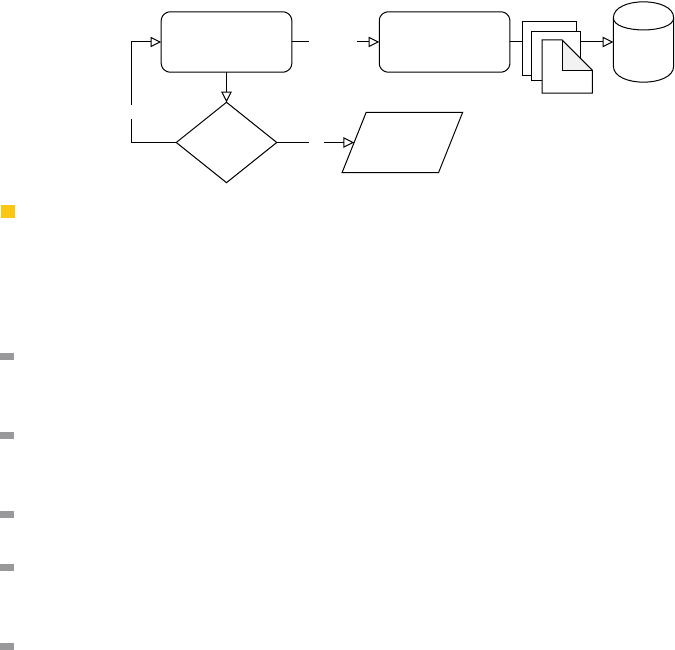
Twins: BFT Systems Made Robust
Shehar Bano !
Facebook Novi, United Kingdom
Alberto Sonnino !
Facebook Novi, United Kingdom
Andrey Chursin !
Facebook Novi, United States
Dmitri Perelman !
Facebook Novi, United States
Zekun Li !
Facebook Novi, United States
Avery Ching !
Facebook Novi, United States
Dahlia Malkhi !
Facebook Novi, United States
Abstract
This paper presents Twins, an automated unit test generator of Byzantine attacks. Twins implements
three types of Byzantine behaviors: (i) leader equivocation, (ii) double voting, and (iii) losing internal
state such as forgetting “locks” guarding voted values. To emulate interesting attacks by a Byzantine
node, it instantiates twin copies of the node instead of one, giving both twins the same identities
and network credentials. To the rest of the system, the twins appear indistinguishable from a
single node behaving in a “questionable” manner. Twins can systematically generate Byzantine
attack scenarios at scale, execute them in a controlled manner, and examine their behavior. Twins
scenarios iterate over protocol rounds and vary the communication patterns among nodes. Twins
runs in a production setting within DiemBFT where it can execute 44M Twins-generated scenarios
daily. Whereas the system at hand did not manifest errors, subtle safety bugs that were deliberately
injected for the purpose of validating the implementation of Twins itself were exposed within minutes.
Twins can prevent developers from regressing correctness when updating the codebase, introducing
new features, or performing routine maintenance tasks. Twins only requires a thin wrapper over
DiemBFT, we thus envision other systems using it. Building on this idea, one new attack and several
known attacks against other BFT protocols were materialized as Twins scenarios. In all cases, the
target protocols break within fewer than a dozen protocol rounds, hence it is realistic for the Twins
approach to expose the problems.
2012 ACM Subject Classification Security and privacy → Distributed systems security
Keywords and phrases Distributed Systems, Byzantine Fault Tolerance, Real-World Deployment
Digital Object Identifier 10.4230/LIPIcs.CVIT.2016.23
Supplementary Material
All artifacts presented in this paper are made publicly available. Specifi-
cally, this includes: (i) the Rust implementation of LibTwins, the Twins framework we implemented
for DiemBFT (Section 5); (ii) the artifacts (the AWS orchestration scripts, and microbenchmarking
scripts and data) used to evaluate LibTwins (Section 6); and (iii) the Python simulator and Twins
instantiation of safety flaw in Fast-HotStuff (Section 3).
Funding This work is funded by Novi, a subsidiary of Facebook.
Acknowledgements
The authors would like to thank Ben Maurer, David Dill, Daniel Xiang, Kartik
Nayak, Ling Ren, and Scott Stoller for feedback on late manuscript, and George Danezis for comments
© Shehar Bano, Alberto Sonnino, Andrey Chursin, Dmitri Perelman, Zekun Li, Avery Ching, and
Dahlia Malkhi;
licensed under Creative Commons License CC-BY 4.0
42nd Conference on Very Important Topics (CVIT 2016).
Editors: John Q. Open and Joan R. Access; Article No. 23; pp. 23:1–23:29
Leibniz International Proceedings in Informatics
Schloss Dagstuhl – Leibniz-Zentrum für Informatik, Dagstuhl Publishing, Germany
arXiv:2004.10617v2 [cs.CR] 14 Jan 2022

23:2 Twins: BFT Systems Made Robust
on early manuscript. We also thank the Novi Research and Engineering teams for valuable feedback.
1 Introduction
Byzantine Fault Tolerant (BFT) protocols introduced in the seminal work of Lamport et
al. [
19
] are designed to withstand attacks or arbitrary malfunction of internal nodes. However,
creating Byzantine attacks in order to validate a BFT system is challenging: (i) Byzantine
behavior is unconstrained and (ii) developers may be tainted by what they think that the
system is designed to tolerate. Last, as a pragmatical consideration, developing code that
implements Byzantine attacks might be risky.
This paper introduces Twins, a principled approach for effectuating Byzantine attacks
on BFT systems and examining their behavior. Instead of coding incorrect behavior, Twins
creates faulty behavior testing from the correct behavior itself, simply by duplicating
correct
and unmodified node behavior. This works as follows.
Twins creates a "faulty" nodes by deploying two (or generally,
k
) instances, both having
the same credentials/signing-keys but running autonomously. Thus, for example, both nodes
can send messages in the same protocol round, but these messages will carry conflicting
proposals or votes; to the rest of the system, this twins behavior will appear indistinguishable
from an equivocating behavior by a single node. In another example, one twin may send a
vote in one round, and its twin will “forget” it has voted in the next round; again, to the rest
of the system, this will appear indistinguishable from a single node violating safety rules.
Twins is based on the insight that most interesting Byzantine attacks are internal and
leverage knowledge of the expected behavior of participants, hence they go unnoticed. In
particular, Twins foregoes trivial attacks such as sending semantically invalid messages,
or sending a message without justification. Thus, leveraging existing code, Twins can
automatically cover material Byzantine behaviors. Indeed, Section 3 demonstrates one new,
and several known, attacks on BFT protocols materialized as Twins attacks. Crucially, in all
cases, protocols break within fewer than a dozen protocol steps, hence Twins successfully
exposes them. Note that Twins scenarios systematically iterate over protocol rounds and
vary the communication patterns among nodes. While inherently exponential, in the above
attacks, it took Twins only minutes to discover protocol flaws that in some cases, took the
community decades to surface.
Twins has been incorporated into a production setting, DiemBFT [
13
], in which Twins can
execute 44M Twins-generated scenarios daily. Whereas the system at hand did not manifest
errors, subtle safety bugs that were deliberately injected for the purpose of validating the
implementation of Twins itself were exposed within minutes. Twins can prevent developers
from regressing correctness when updating the codebase, introducing new features, or
performing routine maintenance tasks.
Twins & attacks on BFT replication.
Twins arises in the context of BFT replication
protocols. In this domain, several worrisome safety and liveness vulnerabilities were exposed
recently [
1
,
23
] in both known protocols [
22
,
17
] and in new ones [
2
]. One reason that
BFT replication lends itself well to analysis via Twins is as follows. A common paradigm
underlying practical BFT replication protocols is a view-by-view design. Each view is driven
by a designated leader proposing to the nodes and going through voting rounds by the nodes.
If a leader is successful, a consensus decision is reached in the view. If not, nodes give up after
a timeout and move to the next view. Transitioning to the new view/leader is tricky: A new
leader must discover if the previous leader was successful, but it may be able to communicate

S. Bano, A. Sonnino, A. Chursin, D. Perelman, Z. Li, A. Ching and D. Malkhi 23:3
only with a subset of the nodes. The transition logic turns out to be the source of problems
in all the above cases, hence exposing the flaw requires only one or two leader rotations.
Twins implementation.
Twins effectuates a Byzantine attack by a Byzantine node via
instantiating twin copies of the node instead of one, giving both twins the same identities
and network credentials. To the rest of the system, the twins appear indistinguishable from
a single node behaving in a “questionable” manner. Twins minutely interacts with existing
code to control message delivery and schedule various coarse-steps such as protocol rounds.
It is practical to deploy in real systems as it uses existing node code, easily keeping up with
an evolving software project.
We built an attack generator based on the Twins approach in the DiemBFT open-source
project, the BFT replication core of the Diem payment system [
13
]. Implementing Twins in
DiemBFT consists of two principal parts.
The first is a scenario executor that deploys a network configuration where some nodes
have twins. The scenario executor hides twins behind a thin multiplexing wrapper; to the
rest of the system, each pair of twins appear as a single entity. The scenario executor controls
the scheduling of message deliveries according to a prescribed scenario. This is accomplished
through a transport emulator in the DiemBFT repository called Network Playground.
The second part is a scenario generator. The scenario generator enumerates scenarios by
varying the number of nodes and the message delivery schedule, then feeding the scenarios
to the scenario executor. We describe in the paper several strategies for drastically reducing
the number of scenarios through aggressive trimming of symmetrical scenarios. Among
these strategies, one minimally “opens” the DiemBFT implementation and lets the scenario
executor determine when a node acts as a leader in the consensus protocol. This removes
duplicate scenarios that differ only in their leaders. Another strategy may allow only faulty
nodes to become leader. Section 6 reports on our experience with Twins in DiemBFT.
Coverage.
What attacks does the Twins approach capture? Developing a rigorous theory
that answers this question is an intriguing question left for future work. Here, we provide
anecdotal evidence of coverage in three forms:
(i) Section 2 brings intuition and experience of several decades of work in the field. There
are only a handful of ways in which a Byzantine attacker can materially deviate from the
safety rules imposed by its protocol. For example, it can equivocate and send different
proposals to different groups of recipients, or it can pretend it did not send/receive a message
and propose or vote in a manner that conflicts with such a message.
(ii) Evaluating within the DiemBFT production system Section 6 provides compelling
validation of the Twins approach. Whereas the system at hand did not manifest errors,
self-injected subtle safety bugs—for the purpose of validating the implementation of Twins
itself—were exposed within minutes. In particular, we created a simple safety-violating
setting by deploying
f
+ 1 (instead of
f
) nodes with Twins, which led to an expected
consistency violation within seconds. We further injected three subtle logical bugs, which
only slightly deviated from the original specification. In all three cases, with only
f
twins
(faults), Twins successfully exposed safety violations.
(iii) Section 3.1 shows how Twins can instantiate a safety violation in a new protocol
described in a recent manuscript [
15
]. This highlights the importance of systematically
analyzing the properties of BFT protocols using Twins to expose subtle flaws. Section 3
reinstates several known attacks on BFT protocols using the Twins approach. These attacks
cover a broad spectrum of vulnerabilities, e.g., safety, liveness, timing, and responsiveness.
In some protocol steps, a node may wait for messages to determine its next action. Under
Twins, the node is forced to act according to the messages it received, as if the node provided
C V I T 2 0 1 6

23:4 Twins: BFT Systems Made Robust
a justification for each step in form of the history of messages it received. Deviating from
this behavior was not required to reinstate any of the attacks discussed in Section 3, though
in principle, various deviating behaviors would not be covered by Twins. Another coverage
challenge emerges in synchronous protocols because a node behavior may be based on real
time. In such protocols, Twins essentially forces a node to behave in a timely manner.
We tackle this case in one of the attacks investigated in Section 3 and demonstrate that
nonetheless, a slight adaptation of the original attack reinstates the attack in Twins. However,
we do not know yet which timing attacks may not be covered. We discuss some concrete
future directions in Section 8 for extending Twins in the settings we explore as well as others.
2 Motivating the Twins Approach
We open this section with a quick primer on the Byzantine Fault Tolerant (BFT) replication
problem, and describe the notation that will be used to describe attacks through the rest
of this paper. We then provide high-level intuition on why Twins is a viable approach by
showing the different kinds of Byzantine behaviors that can be captured by Twins. (Concrete
attacks using Twins are described later in Section 3 and Section 6.1.)
BFT Replication
. The goal of BFT replication is for a group of nodes to provide a
fault-tolerant service through redundancy. Clients submit requests to the service. These
requests are collectively sequenced by the nodes; this enables all nodes to execute the same
chain of requests and hence agree on their (deterministic) output.
Except when specifically noted, we consider protocols that maintain safety against
arbitrary delays in message transmissions. That is, we assume an asynchronous network
setting. The main challenge is to drive agreement on a chain of requests (and their output)
among all non-faulty nodes despite node failures. It is common to rely on leaders to populate
the network with a unique proposal. During periods in which the leader is non-faulty and
communication among the leader and non-faulty nodes is timely, this regime can drive
consensus quickly. This approach is called partial synchrony, indicating that it maintains
safety at all times and progress only during periods of synchrony.
In the Byzantine fault model, a node may crash or arbitrarily deviate from the protocol.
In this setting, a BFT replication system implements a fault tolerant service via
n
nodes,
of which a threshold
f < n/
3 may be Byzantine. As Byzantine behavior is defined rather
vaguely, there is no principled way to evaluate BFT systems. Twins is a new approach to
systematically generate Byzantine attacks. The main idea of Twins is the following: running
two (generally, up to
k
) autonomous instances of a node that both use correct code and
share the same identity, allows us to emulate most interesting Byzantine attacks. Two nodes
share the same identity when they share the same credentials and signing keys.
Notation
. Nodes are represented by capital alphabets (e.g.,
A
) and the twin of a node is
represented by the same alphabet with the prime symbol (e.g.,
A
′
). When referring to a set
of nodes, we enclose them in parentheses e.g., (
A, B, B
′
). We underline a node that is serving
as the leader, e.g.,
A
. The adversary can delay and filter messages between nodes. We denote
partitions of nodes by enclosing them in braces, e.g.,
P
1
=
{A, B, C, D}
and
P
2
=
{E, F, G}
,
and reserve the capital letter
P
to denote them. Additionally, to show messages allowed in
a given direction, we use the symbols
→
and
↔
. For example,
A →
(
B, C
) means
A
can
send messages to
B
and
C
; similarly,
A ↔ P
2
means
A
can send messages to and receive
messages from any node of the partition
P
2
. The scenarios described below use a network
configuration of 7 nodes, (
A, B, C, D, E, F, G
). Byzantine nodes have twins denoted with
′
,

S. Bano, A. Sonnino, A. Chursin, D. Perelman, Z. Li, A. Ching and D. Malkhi 23:5
as in
F
′
,
G
′
. To experiment with any of the deviating behaviors described below, one can
increase the number of Byzantine faults to
f
+ 1 (say
E, F, G
have twins
E
′
, F
′
, G
′
) and
expect to see conflicting commits.
Equivocation
. A quintessential Byzantine behavior is for a node to equivocate. That is, in
the same step, a Byzantine node might send different messages to different recipients.
Twins covers equivocation by splitting honest nodes between two partitions, each one
communicating with only one twin of each pair. For example, we can split the system into
P
1
=
{A, B, C, D, F }, P
2
=
{C, D, E, F
′
, G}
. The leader(s)
F
and
F
′
execute correct leader
code but nevertheless may generate conflicting proposals due to different inputs or randomness
seeds. If there is a protocol flaw then these conflicting proposals could respectively commit
in P
1
and P
2
, hence safety breaks.
Amnesia
. An important role that nodes have in agreement protocols is vote for a single
proposal per view. However, a Byzantine node might vote for a proposal and then ‘forget’
that it has voted and vote again. Twins covers amnesia by letting one of the twins vote on one
proposal. Since the other twin is oblivious to the vote happening, it may nevertheless—albeit
executing correct code—vote on a different proposal.
More concretely, as in the scenario above, we can split the nodes into two partitions,
P
1
=
{A, B, E, F, G}, P
2
=
{C, D, E, F
′
, G
′
}
. If there is a protocol flaw then this double-
voting behavior may result in conflicting commits in P
1
and P
2
, hence safety breaks.
Losing internal states
. Another notable deviation for Byzantine nodes is to lose their
internal state, particularly a lock that guards a value they voted for. Twins covers this
deviation by letting one of the twins get locked on a value in one view, but in some subsequent
view, bring the other twin who is ignorant that a lock exists.
More concretely, we can split the nodes into two partitions
P
1
=
{A, B, E, F, G}, P
2
=
{C, D, E, F
′
, G
′
}
. In one view, the adversary relays messages only among
P
1
. In the next view,
it switches to
P
2
, causing
F
′
, G
′
—albeit executing correct code—to ignore their ‘previous’
actions. This can repeat any number of times. If there is a protocol flaw then conflicting
proposals may commit in different views, hence safety breaks.
3 Attacks Materialized in Twins
In this section, we demonstrate one new, and several known, attacks on BFT replication
protocols, expressed as Twins scenarios. We provide insight into the attacks and defer
the details of all but the linear leader-replacement attack to an appendix, due to space
constraints.
3.1 New Attack
Fast-HotStuff [
15
] is a new protocol, described in a recent manuscript. It is similar to
HotStuff [
32
], except with a 2-phase commit rule. The safety violation we reveal using Twins
is possible because Fast-HotStuff does not require consecutive rounds in order to commit.
Specifically, Quorum Certificates (QCs) [
32
] formed by some of the (partitioned) nodes
do not reach the other nodes, resulting in two parallel branches that eventually commit
two conflicting blocks. We instantiate this safety violation with Twins (using only network
partitions in a network with 4 nodes and within 11 rounds). This highlights the efficacy of
systematically analyzing the properties of BFT protocols via Twins to expose subtle flaws.
More details are provided in Appendix F.
C V I T 2 0 1 6

23:6 Twins: BFT Systems Made Robust
We implemented the Fast-HotStuff BFT consensus algorithm in a Python simulator which
we release as open source
1
. The simulator then executes Twins scenarios over the algorithm.
3.2 Reinstated Attacks
We present several known attacks on BFT protocols, expressed as Twins scenarios. In all
cases, exposing vulnerabilities requires only a small number of nodes, partitions, rounds
and leader rotations. It is worth noting that later, our evaluation (Section 6) of LibTwins,
Twins implemented for DiemBFT, shows that running an automated scenario generator
(Section 4.2) with these configurations would cover the described attacks within minutes. We
did not undertake to re-implement all these protocols and apply a Twins scenario generator
to them; our implementation covers only DiemBFT [13].
Safety attack on Zyzzyva
. Zyzzyva broke new ground in BFT replication with the
introduction of an optimistic single phase “fast track” commit. Eleven years elapsed from
its publication until a safety flaw in Zyzzyva was discovered [
1
], during which numerous
research project and systems were built on it. Twins generates a scenario that exposes the
flaw with 4 nodes and two leader rotations: the first leader equivocates via a twin, and the
next two leaders drop messages to/from some nodes. The details of this attack using Twins
is described in Appendix C.
Liveness attack on FaB
. FaB [
22
], a precursor to Zyzzyva, is a view-based protocol with
an optimistic fast track. Not surprisingly, a similar problem arises in FaB due to a flawed
leader replacement protocol [
1
], albeit manifesting as a liveness bug. Twins exposes this bug
in a short scenario with
n
= 4 and three leader rotations, leading to a complete absence of
leader proposals. The detailed attack using Twins is described in Appendix D.
Timing attack on Sync HotStuff
. Force-Locking Attack [
23
] is a timing attack on a
preliminary version of a synchronous BFT protocol named Sync HotStuff [
2
] (which was
subsequently updated to resist the attack). As before, Twins captures this attack with only
a small system size,
n
= 5, and two leader rotations. However, in order to create timing
attacks, Twins needs to be aware of timing information for protocol steps and messages
deliveries. Extending Twins with timing data is left for future work. In the specific attack at
hand, course-grain timing at fixed intervals—fewer than ten—suffice to reinstate the attack.
The detailed attack using Twins is described in Appendix E.
Non-Responsiveness attack on linear leader-replacement
. Practical Byzantine Fault
Tolerance (PBFT) [
9
] is a seminal work that was designed to work efficiently in the asyn-
chronous setting. Carrying the classical PBFT solution to the blockchain world, Ten-
dermint [
7
] and Capser [
8
] introduced a simplified linear strategy for leader-replacement.
However, it has been observed [
6
,
31
] that this strategy forgoes an important property of
asynchronous protocols—Responsiveness—the ability of a leader to advance as soon as it
receives messages from 2f + 1 nodes.
2
Indeed, bringing linear leader-replacement approach
into PBFT, we demonstrate a liveness attack using a Twins scenario. Lack of progress is
detected by observing that two consecutive views with honest leaders whose communication
with a quorum is timely do not produce a decision. We present the details of this attack
using Twins in the next section.
1
https://github.com/asonnino/twins-simulator/tree/master/fhs
2
Tendermint is a precursor to HotStuff [
32
] and DiemBFT [
13
] which operates in two-phase views, but
has no Responsiveness. HotStuff/DiemBFT solve this by adding a third phase.

S. Bano, A. Sonnino, A. Chursin, D. Perelman, Z. Li, A. Ching and D. Malkhi 23:7
3.3 Non-Responsiveness Attack
We now describe in more detail the non-Responsiveness attack above on linear leader-
replacement. The seminal PBFT solution operates two-phase views. A simplified, linear
leader-replacement works as follows. A leader proposes to extend the highest quorum
certificate (QC) it knows. A QC is formed on a proposed value if it gathers 2
f
+ 1 votes from
nodes. Nodes vote on the leader proposal if it extends the highest QC they know. A commit
decision on the leader proposal forms if 2
f
+ 1 nodes form a QC, and then 2
f
+ 1 nodes
vote for the QC. Progress is hinged on leaders obtaining the highest QC from the system,
otherwise liveness is broken.
Using the notation from Section 2, the liveness attack here uses 4 replicas (
D, E, F, G
),
where
D
has a twin
D
′
. In the first view,
D
and
D
′
generate equivocating proposals. Only
D, E
receive a QC for
D
’s proposal. The next leader is
F
who proposes to re-propose the
proposal by
D
′
, which
E
and
D
do not vote for because they already have a QC for that
height. Only
F
and
D
′
receive a QC for
F
’s proposal. This scenario repeats indefinitely,
resulting in loss of liveness. More specifically, this attack works as follows:
View 1: Initialize D and D
′
with different inputs v
1
and v
2
.
Create the partitions P
1
= {D, E, G}, P
2
= {D
′
, F }.
Let
D
and
D
′
run as leaders for one round.
D
proposes
v
1
to
P
1
and gathers votes
from P
1
creating QC(v
1
). D
′
proposes v
2
to P
2
and gathers votes but not a QC.
Create the following partitions:
P
1
=
{D, E}
,
P
2
=
{D
′
, F }
,
P
3
=
{G}
.
D
broadcasts
QC(v
1
), which only reaches P
1
i.e., (D, E).
View 2: Drop all proposals from D and D
′
until View 2 starts.
Remove all partitions, i.e., P = {D, D
′
, E, F , G}.
Let
F
run as leader for one round.
F
re-proposes
v
2
(i.e.,
D
′
’s proposal in the previous
round) to
P
. (
D, E
) do not vote as they already have
QC
(
v
1
) for that height.
F
gathers votes from the other nodes and forms QC(v
2
).
Create partitions P
1
= {D, E}, P
2
= {D
′
, F }, P
3
= {G}.
F broadcasts QC(v
2
), which only reaches P
2
.
View 3: Drop all proposals from F until View 3 starts.
Create the partitions P
1
= {D, E, G}, P
2
= {D
′
, F }.
Let
E
run as leader for one round.
E
proposes
v
3
which extends the highest QC it
knows,
QC
(
v
1
). As before,
E
manages to form
QC
(
v
3
), but as a result of a partition,
the QC will only reach (
D, E
). Next, there is a view-change,
F
is the new leader, and
there are no partitions.
F
proposes
v
4
which extends
QC
(
v
2
), the highest QC it knows.
However, (
D, E
) do not vote because
v
4
does not extend their highest QC i.e.,
QC
(
v
3
).
This scenario can repeat indefinitely, resulting in the loss of liveness.
4 Systematic Scenario Generation
Whereas the previous section demonstrated manually crafted Twins attack scenarios, this
section presents a framework for systematically generating such scenarios.
Systematically and efficiently generating Twins scenarios that provide good coverage
requires tailoring to the specific BFT protocol settings. We develop the Twins framework
which generates and executes scenarios that describe the node and network configurations.
Specifically, the Twins framework is comprised of two components as shown in Figure 1: (i)
the scenario executor, and (ii) the scenario generator. The scenario executor runs a single
scenario and generates output logs, while the scenario generator produces various scenarios
C V I T 2 0 1 6

23:8 Twins: BFT Systems Made Robust
Scenario Generator
More
Scenarios?
Scenario Executor
Scenario
Yes
FinishedNo
Output
Logs
Persistent
Storage
Figure 1 Twins high-level design.
that are fed to the scenario executor to check for violations. The following design goals
underlie the Twins framework:
Generic & Modular.
Twins is modular with respect to the particular BFT protocol im-
plementation being analyzed, imposes as little complexity as possible on the development,
and easily keeps up with code changes.
Parametrizable.
The network setup (i.e., the number of nodes, leaders per round, and
network configuration per round) and adversarial assumptions (i.e., how many Byzantine
faults are tolerated) is configurable.
Feasible.
Twins allows pruning duplicate scenarios in order to provide coverage of
material attacks.
Customizable Coverage.
The coverage of scenarios, i.e., the subset of all possible
scenarios to choose for execution, is configurable by randomly sampling scenarios to run
among all possible enumeration.
Reproducible.
Twins writes logs to persistent storage, containing sufficient information
to detect and reproduce any safety violations.
Next, we describe the two main components (Figure 1) of Twins—the scenario executor
and the scenario generator—in detail.
4.1 Scenario Executor
In every Twins scenario, a threshold of the nodes are ‘misconfigured’ to have a twin instance
with identical transport endpoint credential and secret keys. The Twins scenario executor
gets as input a scenario consisting of a node-set, a subset of which are marked compromised
(representing Byzantine nodes); and a round-by-round message delivery schedule. The
scenario executor sets up a network of nodes with a given number of compromised nodes
and per round partitions and leaders. The compromised nodes correspond to the nodes for
which the scenario executor creates twins (i.e., identical instances with the same credentials
and signing keys), thereby emulating misbehavior.
As mentioned above, we address BFT replication protocols that proceed in rounds
initiated by a designated leader, each round representing a state transition in the protocol’s
state machine replicated on each node. For each round, the scenario executor creates a given
network partition and assigns given leaders to the round. The scenario executor runs the
BFT protocol among nodes for a pre-specified number of rounds, at the end of which, the
scenario executor checks for violations. Specifically, protocol guarantees can be violated in
two principal ways, safety and liveness. A safety violation is detected if two nodes commit
to conflicting decisions. A liveness violation can be detected if the protocol fails to commit
within a certain number of steps or a certain duration bound.

S. Bano, A. Sonnino, A. Chursin, D. Perelman, Z. Li, A. Ching and D. Malkhi 23:9
4.2 Scenario Generator
We build a scenario generator of round-by-round scenarios: for each round, the scenario
generator enumerates possible leaders and message delivery schedules among nodes. The sce-
nario generator produces various scenarios to be fed into the scenario executor. Each scenario
represents a unique instance of executor configuration parameters, i.e., the compromised
nodes and per round network partitions and leaders. Scenarios are generated systematically
as follows (see notations in Section 2):
Step 1. The scenario generator first produces the set of all possible partitions of nodes
(called partition scenarios). For example, for a network of 4 nodes (
A, B, C, D
), possible
partition scenarios (
P
) include
{P
1
=
{A, D}, {B, C}}
, and
P
2
=
{{A}, {B, C, D}}
. This
problem relates to the Stirling Number of the Second Kind [
27
] which enumerates the
ways in which a set of
N
nodes can be divided up into
P
non-empty partitions, where
P
ranges from
N
(i.e., each node is self-isolated) to 1 (i.e., fully connected network without
partitions).
Step 2.
Next the scenario generator assigns each partition scenario to all possible leaders
i.e., the set of
N
nodes assuming any of those can be a potential leader. For example,
for the example partition scenario above
{P
1
=
{A, D}, {B, C}}
for a network of nodes
(
A, B, C, D
), possible leader-partition combinations include
{A, P
1
}
,
{B, P
1
}
,
{C, P
1
}
,
{D, P
1
}
. Each leader-partition combination fully describes the Twins configuration
required for each round.
Step 3.
The scenario generator lists scenarios by enumerating all possible ways in which
the leader-partition pairs generated in the previous step can be arranged over
R
rounds
(i.e., permutation, with or without replacement).
The scenario generator iterates over the generated scenarios linearly, and invokes the
scenario executor for each scenario. For safety analysis, usually a small number of rounds
(
<
10) suffices to expose logical bugs in the protocol. Scenario generators therefore need to
enumerate a reasonable number of combinations.
Pruning scenarios
. Important to the success of the approach is for the scenario generator
to avoid duplicate scenarios (e.g., in symmetry or node label
3
rotation) and generate only
materially different scenarios. The implementation we describe in the Evaluation section
of this paper (Section 6) employs aggressively such pruning. Certain heuristics further
substantially reduce the number of scenario configurations. For example, in most safety
violations the set of honest parties is split into two, hence it suffices to play with two or
three partitions per round. These optimizations make it feasible to cover a broad range of
meaningful scenarios. For analyzing liveness, many scenarios will obviously fail to make
progress because there does not exist a super-majority quorum that has reliable and timely
communication among its members. Hence, for liveness analysis the scenario generator must
guarantee that eventually such a quorum exists.
Message delays and timeouts
. We note that the scenario generator does not address
message delays and timeouts, only the dropping of messages and their relative delivery order.
Because the BFT protocol may employ timers, the dropping of messages implicitly implies
3
Nodes can have designated roles in the protocol, referred to as node labels. Twins incorporates the
label ‘leader’, which is the case for standard BFT protocols. Extensions of these protocols might have
further hierarchy e.g., primary and secondary leaders. This is currently not supported, but the scenario
generator can be easily extended to support different node labels.
C V I T 2 0 1 6

23:10 Twins: BFT Systems Made Robust
rx
tx
Node 0
Node 1
Node n
NetworkPlayground:::wait_for_messages
(Network Playground intercepts messages here)
rx
tx
rx
tx
rx
rx
rx
deliver_message( )
tx
tx
tx
Node 0
Node 1
Node n
Inbound messages to nodesOutbound messages from nodes
Figure 2 Design of DiemBFT’s Network Playground.
that relevant endpoint incur a violation of presumed bounds on transmission delays. Future
work may incorporate explicit message delays into the scenario generator to check specific
timing violations and also to analyze BFT protocols in the synchronous model (Section 8).
5 Implementation
We implemented the Twins framework for DiemBFT, which we call LibTwins. Appendix A
provides an overview of DiemBFT. As described in Section 4, an implementation consists
of two principal ingredients, a scenario generator and an scenario executor (Figure 1). We
first describe the scenario executor implementation which leverages a network emulator
in DiemBFT referred to as the network playground. We then proceed to describe the
scenario generator implementation. For completeness, the Rust code and interfaces for the
main functions of LibTwins,
execute_scenario
and
scenario_generator
, are provided in
Appendix B. We are open sourcing the Rust implementation of LibTwins
4
.
5.1 Scenario Executor
The LibTwins scenario executor leverages the network emulator of DiemBFT, network
playground
5
. Network playground provides an apparatus for running single-host DiemBFT
deployments, emulating a network and intercepting all messages exchanged between nodes.
Scenarios can be written to manipulate the intercepted messages (e.g., by dropping certain
messages) and observe node response. Figure 2 shows the design of the network playground.
Nodes are represented by processes run on different threads (that run the full consensus
protocol), and network links between them are expressed as Rust channels that provide
asynchronous unidirectional communication between threads. In DiemBFT, nodes are
identified by their Account Address (a public key that uniquely identifies a node). Channels
are associated with their respective account addresses (nodes). When a node starts a new
round, it checks whether it is leader for this round; if yes, then it generates on the fly a block
to propose using a mock block generator. Each call to the mock block generator produces a
different block. This has important implication for LibTwins, as we require a node and its
twin to propose different blocks at the same round to emulate equivocation.
The scenario executor component (Section 4) of LibTwins is built on top of network
playground. This required the following modifications and extensions to the original library:
4
https://github.com/diem/diem
5
https://github.com/diem/diem/blob/master/consensus/src/network_tests.rs

S. Bano, A. Sonnino, A. Chursin, D. Perelman, Z. Li, A. Ching and D. Malkhi 23:11
Adding twins.
We wrote a new method to add nodes to the network that supports
twins. The method takes ‘compromised nodes’ as a parameter to refer to the nodes for
which to create twins. For each target node, a duplicate instance is created with the
same credentials and signing keys. Consequently, in the eyes of the other nodes the
compromised node and its twin are indistinguishable.
Inferring rounds.
LibTwins requires to apply a number of filtering policies at the round
level. Network playground does not have a notion of rounds—it only supports static
configurations that remain unchanged throughout protocol execution. There is no global
notion of rounds in a distributed system with partial synchrony; instead, nodes have their
own view of which round they are in, which they include in their messages. We enable
network playground to extract round from intercepted messages and accordingly apply
filtering criteria.
Round-based message filtering.
Network playground allows writing rules to drop
intercepted messages that meet certain criteria, i.e., messages to or from specified nodes
and messages of specified types e.g., votes or proposals. LibTwins extends network
playground to drop intercepted messages per round, which allows emulating different
network partitions per round. The message dropping rules treat compromised nodes and
their twins differently—the rules apply to account addresses (which uniquely identify
nodes), not public keys (which are the same for a target node and its twins).
Deterministic multi-leader election.
DiemBFT currently uses a non-deterministic
leader election algorithm. LibTwins requires leader election at a finer granularity, i.e.,
assigning a specified leader to each round, potentially assigning multiple leaders to a
round (because if a compromised node is elected as a round leader, its twins becomes
leader too). We wrote a new leader election algorithm for DiemBFT that supports these
requirements.
To emulate running the protocol for a given number of rounds, we approximate rounds
by the number of messages emitted by nodes. Note that in a system with partial synchrony,
we can only make guesses about rounds as there is no global notion of rounds. Using
message-count per-round (without partitions) as an ‘over-guesstimate’, we let the nodes vote
for 3 extra rounds. Over-running a scenario has no consequence on the results of LibTwins
(other than longer scenario execution time) because any safety violations would have already
been detected in earlier rounds.
5.2 Scenario Generator
The scenario generator produces scenarios in three main steps. First, it generates all the
possible ways in which a set of
N
nodes can be split into
P
partitions (partition scenarios).
Second, it generates all possible ways in which
L
leaders can be combined with the partitions
generated in the previous step. Finally, it generates all the possible ways in which the partition-
leader combinations can be permuted over
R
rounds of consensus protocol execution. The
scenario generator can operate in online or offline modes. In the online mode, scenarios
are generated on the fly and fed to the scenario executor. The scenario generator can be
configured to write the scenarios to a file. In the offline mode, the scenario generator reads
previously generated scenarios from a file and feeds them to the scenario executor.
Pruning scenarios
. A naïve enumeration of all combinations of
P
partitions,
L
leaders, and
R
rounds may explode quickly (see Table 1). In order to constrain the number of generated
scenarios in a particular run, we provide hooks to control the number of
P
partitions,
the number of
L
leader-partition pairs, and the number of leader-partition configuration
C V I T 2 0 1 6

23:12 Twins: BFT Systems Made Robust
assignments to rounds. For all three cases, we specify whether the selection is deterministic—
first
X
—or randomized—an
X
sample. In the third case—configuration assignment to
rounds—the total combination space to select from is large. Therefore, the scenario generator
allows randomizing the per-round configuration selection, rather than sampling over the
entire space of assignments.
6 Evaluation
We validate the capability of LibTwins to model and detect attacks, present microbenchmarks
for the main components of LibTwins, and describe our experiments at scale using Amazon
Web Services (AWS) [
4
]. We are open sourcing the implementation of LibTwins, AWS
orchestration scripts, and microbenchmarking scripts and data to enable reproducible results
6
.
All our evaluations correspond to 4–7 nodes, 4–7 rounds and 2–3 partitions. Intuitively,
these configurations seem sufficient to expose any safety violations. Indeed, the known
attacks on BFT protocols described in Section 3 were exposed with only a small number
of nodes, partitions and leader rotations. A recent work [
25
] on the coverage of random
scenarios to detect crash faults shows that coverage depends on the number of partitions and
node labels (in our case, the leaders), but not on the number of nodes. For Jepsen [
16
], all
the bugs that provide meaningful coverage have a small number of rounds, and 2–3 partitions
and roles [
25
]. Using higher values for these parameters leads to a very large number of
scenarios, which cannot be feasibly executed without some sort of filtering (Section 5.2). It
is an interesting open question whether increasing the value of these parameters has a higher
chance of exposing safety violations.
6.1 Validation
We deliberately introduce bugs to DiemBFT, and validate that LibTwins is able to model
and detect attacks that exploit the injected vulnerabilities. This approach is similar to
mutation testing, a well-known technique to evaluate the quality of existing tests in terms of
whether they can detect programs with deliberately injected modifications (called “mutants”).
While approaches such as automated mutation testing can help us to exhaustively introduce
mutants, this is computationally expensive and not practical for large, complex systems.
We select bugs to inject into DiemBFT based on their ability to compromise the program’s
functional correctness. We note that this choice is based on our intuition and experience, and
does not provide any coverage guarantees. The validation approach we use is to: (i) inject
the bug into DiemBFT; and (ii) generate scenarios using the LibTwins scenario generator,
checking for any safety violations. We instantiate the scenario generator with different
configurations and vary them until a safety violation is exposed.
We begin with the base case: can LibTwins generate a scenario that violates safety when
the BFT threshold is exceeded (i.e.,
> f
Byzantine nodes)? We discovered a safety violation
with 4 nodes and 2 twins (
A, B, C, D, A
′
, B
′
), 7 rounds, and static scenario configuration (i.e.,
each partition-leader combination is run for all
R
rounds). LibTwins executed 62 scenarios
of which 8 led to safety violation within 86s.
Changing quorum size to 2f
. BFT protocols consider a state transition safe if it receives
votes from an honest majority of nodes (i.e., quorum). We change DiemBFT’s quorum size
6
https://github.com/libra/libra

S. Bano, A. Sonnino, A. Chursin, D. Perelman, Z. Li, A. Ching and D. Malkhi 23:13
(a) 4 Nodes, 2 Partitions, 4 Rounds. (b) 4 Nodes, 2 Partitions, 7 Rounds.
Figure 3
Time taken by the scenario generator to produce LibTwins scenarios. Each data point is the
average of 10 runs; error bars represent one standard deviation.
from 2
f
+1 to 2
f
. LibTwins detects a safety violation with 4 nodes and 1 twin (
A, B, C, D, A
′
),
7 rounds, and static scenario configuration (i.e., where each partition-leader combination is
run for all the
R
rounds). Within 20s, LibTwins executes 14 scenarios of which 6 lead to
safety violation. These scenarios have the same pattern: Nodes are split into two partitions
of size 2 and 3, with
A
in one partition and
A
′
in the other. As nodes in the two partitions
can form quorum, oblivious to each other they continue to generate quorum certificates on
blocks proposed by
A
and
A
′
, respectively. Ultimately, nodes in the two partitions commit
two different blocks.
Accepting conflicting votes
. Upon receiving a proposal, nodes vote for it only if the
block_round
is greater than the
last_voted_round
(Safety Rule 1, Appendix A). We intro-
duce a subtle bug to DiemBFT by changing this rule, so that a node votes for a block if the
block_round
is greater than or equal to the
last_voted_round
. LibTwins detects the safety
violation within a few seconds, with 4 nodes and 1 twin
{A, B, C, D, A
′
}
, and 7 rounds. This
safety bug was detected in one-shot, with 0 partitions. Nodes vote on proposals from both A
and A
′
and quickly end up committing two different proposals for the same round.
Forgetting to update preferred round
. Upon receiving a proposal, nodes vote for the
block if the
block_round
is greater than
last_voted_round
, and the block’s
parent_round
is greater than or equal to
preferred_round
(Safety rules 1 and 2, Appendix A). We disable
the first check, and bypass the second check by never updating
preferred_round
so it
permanently remains at 0 (Update rule 2, Section A). The main ingredient of an attack
that exploits the bug described above is to propose a block in an old round, and get the
nodes to over-write committed blocks (safety violation). The challenge for LibTwins is that
as a twin node runs correct code, it cannot be made to propose blocks in arbitrary rounds.
One option is to partition the twin node in an old round, and bring it back up in a later
round, so it starts proposing blocks from where it left. This is, however, not possible in a
‘full disclosure’ protocol like DiemBFT where each quorum certificate (or timeout certificate)
contains the full history of previous messages that led to the certificate. That is, as soon
as
A
′
recovers from the partition, it receives a quorum certificate (or timeout certificate)
from other nodes and advances its round. To emulate
A
′
going back in time and proposing a
block for an older round, we let it run as leader for a few rounds, crash it, and then recover
it again as leader. When
A
′
comes back up again it starts from round 0, proposing a block
that builds on the genesis block (the first committed block). Because of our modifications to
the preferred_round and last_voted_round checks, the nodes re-write history.
C V I T 2 0 1 6

23:14 Twins: BFT Systems Made Robust
Nodes Twins Partitions Rounds Step 1 Step 2
Step 3
No Repl. Repl. Static
4 1 2 4 15 15 ∼ 3 × 10
4
∼ 5 × 10
4
15
4 1 3 4 25 25 ∼ 3 × 10
5
∼ 4 × 10
5
25
4 1 2 7 15 15 ∼ 3 × 10
7
∼ 2 × 10
8
15
4 1 3 7 25 25 ∼ 2 × 10
9
∼ 6 × 10
9
25
7 2 2 4 255 510 ∼ 7 × 10
10
∼ 7 × 10
10
510
7 2 3 4 3,025 6,050 ∼ 1 × 10
10
∼ 1 × 10
15
6,050
7 2 2 7 255 510 ∼ 9 × 10
18
∼ 9 × 10
18
510
7 2 3 7 3,025 6,050 ∼ 3 × 10
26
∼ 3 × 10
26
6,050
Table 1
The number of LibTwins scenarios generated for various configurations. Steps 1, 2 and 3
correspond to the scenario generation pipeline described in Section 4.
Step 1:
The number of ways
in which
N
nodes can be distributed among
P
partitions.
Step 2:
The number of ways in which the
partitions generated in Step 1 can be combined with leaders.
Step 3:
The number of ways in which the
partition-leader pairs generated in Step 2 can be permuted (with and without replacement) over
R
rounds.
In Static configurations, each partition-leader pair is statically configured for all the R rounds.
6.2 Microbenchmarks
We present microbenchmarks for the two main components of LibTwins: scenario generator
(Section 5.2) and scenario executor (Section 5.1). The microbenchmarks are run on an Apple
laptop (MacBook Pro) with a 2.9 GHz Intel Core i9 (6 physical and 12 logical cores), and 32
GB 2400 MHz DDR4 RAM.
Scenario generator microbenchmarks
. The scenario generator incurs a one-time com-
putational cost—once the scenarios are generated, the scenario generator feeds them one
by one to the scenario executor. Table 1 shows the number of scenarios generated with
different configurations. We observe that the number of nodes and the number of rounds
significantly increase the output of Step 1, which increases proportionally in the number of
twins (as we only configure nodes with twins to become leaders). We find that non-static
configurations in Step 3 cause the number of scenarios to explode. Therefore, of the various
filters implemented for the scenario generator (Section 5.2), we find the filter at Step 2 to
be most useful. We use this filter to make our at-scale Twins analysis (Section 6.3) feasible.
Note that this inevitably comes at the cost of completeness of coverage—a trade-off that
we cannot completely eliminate. Figure 3 shows how long the scenario generator takes to
produce scenarios for the same number of nodes (4) and partitions (2), and 4 (Figure 3a) and
7 (Figure 3b) rounds. We observe that while it expectedly takes longer to generate scenarios
for 7 rounds vs. 4 rounds due to a larger number of permutations, for each case the time
taken increases linearly in the number of scenarios. We observe a similar linear trend in
our microbenchmarks for other configurations with varying number of nodes and partitions
(figures not included due to space constraints).
Scenario executor microbenchmarks
. Table 2 shows the time the scenario executor
takes to execute a scenario. We repeat each measurement over 100 randomly selected
scenarios from a configuration with 2 partitions, and varying number of nodes (4 and 7) and
rounds (4–12). We observe that for 4 nodes, the execution time ranges from 234–465ms for
4–12 rounds, with a maximum standard deviation of 314ms. For 7 nodes, the execution time
ranges from 547–748ms for 4–12 rounds, with a maximum standard deviation of ∼ 1.2s.
The variation observed above in execution times is expected because of how DiemBFT
handles timeouts (Appendix A). For each scenario, LibTwins runs DiemBFT until it has
observed a given number of messages (proposals and votes), which roughly corresponds to

S. Bano, A. Sonnino, A. Chursin, D. Perelman, Z. Li, A. Ching and D. Malkhi 23:15
Rounds
4 Nodes 7 Nodes
Mean (ms) Std. (ms) Mean (ms) Std. (ms)
4 239 314 547 1,286
5 250 87 555 1,059
6 284 88 555 802
7 296 87 559 752
8 334 209 647 810
9 363 175 643 557
10 398 222 653 539
11 433 168 718 570
12 465 179 748 223
Table 2
The time scenario executor takes to execute a scenario for 4 and 7 nodes, over varying number
of rounds and fixed partitions (=2). Each measurement is repeated for 100 randomly selected scenarios.
the number of rounds. In some scenarios, LibTwins can quickly pull out the given number of
messages and finish the scenario in a timely manner. In other scenarios, we might end up
with partitions where the nodes are not able to make progress and advance rounds, due to
frequent round failures and increased timeout values. Some scenarios may take longer to run,
waiting for the network to emit enough messages to conclude the scenario. The execution of
scenarios has negligible (< 0.1%) memory and CPU footprints.
6.3 Running Scenarios at Scale
We evaluate LibTwins at scale, by running it against the correct code of DiemBFT. We
executed 44M scenarios which were randomly selected from the 200M scenarios corresponding
to the third row of Table 1 (that is, with 4 nodes, 2 partitions, 7 rounds, permuted with
replacement). We first generated all the 200M scenarios and randomly selected 44M samples.
We ran the scenario generator in offline mode so the scenarios are written to file rather than
being passed to the scenario executor. We then split the generated scenarios into 20 shards.
The scenarios can be easily sharded, as the scenarios are independent of each other—this
implies that subject to the availability of computing power to generate and execute scenarios,
LibTwins can be scaled up arbitrarily via sharding. We execute the sharded scenarios over
20 parallel instances of LibTwins on AWS. We use
t3.2xlarge
instances with 8 vCPUs, 2.5
GHz, Intel Skylake P-8175; 32 GB of RAM, and 300 GB of SSD storage. All machines run a
fresh installation of Ubuntu 18.04. We did not observe any safety violations.
7 Related Work
There are two typical approaches to validate distributed systems. The first approach is to
offer strong guarantees by building a fully verified system from the ground up [
18
,
26
], or to
show the absence or presence of bugs [
29
,
11
,
10
,
21
] by exhaustively enumerating the space
of system behaviors [5, 30] under systematically injected faults [3, 20].
Fully verified systems do not scale to systems deployed in the real world. Model checking
and exhaustive enumeration of distributed system faults (especially, Byzantine arbitrary
behavior) leads to state explosion (despite partial order reduction techniques [
14
]), resulting in
low performance. This motivates the second approach of random validation, which underlies
the discipline of Chaos Engineering, exemplified by systems like Chaos Monkey [
24
]. The
main idea is to analyze the resiliency of a distributed system by randomly injecting faults (e.g.,
terminating processes). Turret [
20
] refines this idea by focusing on performance attacks. It
runs an attack-finding algorithm using different strategies, ranging from simple brute-force to
C V I T 2 0 1 6

23:16 Twins: BFT Systems Made Robust
more sophisticated “greedy search” algorithms. Jepsen [
16
] is a blackbox analysis framework
that runs processes with a random, auto-generated workload and randomly injected network
partitions. A related approach is to subject the system being evaluated to trials by fire such
as Cosmos Game of Stakes [
12
], i.e., financially incentivizing the community to attack the
‘mock’ network, and analyzing successful attacks to harden the network. Random validation
is effective and scalable—but it is not comprehensive or reproducible, and cannot be used to
evaluate distributed systems in an ongoing fashion.
Prior work (with the exception of Jepsen) focused on crash faults. Twins is a new,
principled approach to validate BFT systems by emulating Byzantine behavior via twins—
copies of ‘compromised’ nodes that can send duplicate or conflicting messages. Twins
advances state-of-the-art by providing a framework to systematically generate scenarios
with configurable coverage, and only modeling correct executions (thus avoiding the state
explosion problem associated with formal methods). We show with extensive evaluations
that Twins is suitable for evaluating real-world systems, and can be scaled up arbitrarily for
larger scenario coverage. Twins automatically generate scenarios that modify the interaction
of components with the environment, without opening the code.
8 Future Work & Conclusion
Twins is a novel approach to systematically analyze BFT systems. It provides coverage
for many, but not all, Byzantine attacks. The paper demonstrated anecdotal evidence of
coverage with respect to several known Byzantine attacks, and an implementation of Twins
for DiemBFT that exposes misconfiguration and purposely injected logical bugs within
minutes. Many directions are left open for future extensions.
Theory of Twins coverage.
As mentioned in the Introduction, it is left open to rigorously
characterize the attacks that Twins can cover. In particular, we conjecture that Twins covers
all Byzantine behaviors in a class of protocols that have ‘full disclosure’: each message
includes a reference to its entire causal past and any source of non-determinism (such as local
coin flips), and nodes act deterministically according to their causal past. It would seem that
this class of protocols is fully covered by Twins since the only possible attack by Byzantine
nodes is to select different subsets of messages to report to different targets. Similarly,
we conjecture that Twins can cover timing violations in a class of ‘lock-step’ synchronous
protocols. Increasing coverage of Twins in the settings we explore as well as others, and
providing a formal treatment of coverage remain interesting open challenges.
Checking additional properties.
A different dimension for extension is the type of
guarantees which Twins scenarios. While this paper focused squarely on safety of the core
consensus protocol, the Twins approach can be extended to validate ancillary components of
BFT systems. For example, DiemBFT switches to a new set of nodes by committing a special
block that includes the new set of nodes and signals the reconfiguration event. It would be
useful to investigate if Twins can cause a safety violation by creating an inconsistent node
change (i.e., parts of the network believe in different nodes). Similarly, DiemBFT’s smart
contract execution engine is re-instantiated via a similar mechanism, and can be subjected
to a similar Twins-based attack.
Extending Twins implementation.
With respect to the concrete DiemBFT Twins
implementation presented in Section 5, several extensions are left for future work, including:
(i) tackling more than a pair of twins; (ii) detecting liveness violations; and (iii) implementing
process-level twins over TCP/IP.

S. Bano, A. Sonnino, A. Chursin, D. Perelman, Z. Li, A. Ching and D. Malkhi 23:17
References
1
Ittai Abraham, Guy Gueta, Dahlia Malkhi, and Jean-Philippe Martin. Revisiting Fast Practical
Byzantine Fault Tolerance: Thelma, Velma, and Zelma. arXiv preprint arXiv:1801.10022,
2018.
2
Ittai Abraham, Dahlia Malkhi, Kartik Nayak, Ling Ren, and Maofan Yin. Sync HotStuff:
Simple and Practical Synchronous State Machine Replication. In IEEE Symposium on Security
and Privacy, 2020.
3
Peter Alvaro, Joshua Rosen, and Joseph M. Hellerstein. Lineage-Driven Fault Injection. In
SIGMOD International Conference on Management of Data, 2015.
4
Inc. Amazon Web Services. AWS Whitepapers.
https://aws.amazon.com/whitepapers
, 2017.
5
Christel Baier and Joost-Pieter Katoen. Principles of Model Checking (Representation and
Mind Series). The MIT Press, 2008.
6
Ethan Buchman. Tendermint: Byzantine Fault Tolerance in the Age of Blockchains.
https:
//cdn.relayto.com/media/files/LPgoWO18TCeMIggJVakt_tendermint.pdf, 2016.
7
Ethan Buchman, Jae Kwon, and Zarko Milosevic. The Latest Gossip on BFT Consensus.
arXiv preprint arXiv:1807.04938, 2018.
8
Vitalik Buterin and Virgil Griffith. Casper the Friendly Finality Gadget. arXiv preprint
arXiv:1710.09437, 2017.
9
Miguel Castro and Barbara Liskov. Practical Byzantine Fault Tolerance. In USENIX
Symposium on Operating Systems Design and Implementation, 1999.
10
Ang Chen, W Brad Moore, Hanjun Xiao, Andreas Haeberlen, Linh Thi Xuan Phan, Micah
Sherr, and Wenchao Zhou. Detecting Covert Timing Channels with Time-Deterministic Replay.
In USENIX Symposium on Operating Systems Design and Implementation, pages 541–554,
2014.
11
Ang Chen, Yang Wu, Andreas Haeberlen, Wenchao Zhou, and Boon Thau Loo. The Good,
the Bad, and the Differences: Better Network Diagnostics with Differential Provenance. In
ACM SIGCOMM Conference, 2016.
12 Cosmos. Cosmos Game of Stakes, 2018. https://github.com/cosmos/game-of-stakes.
13 Diem. DiemBFTBFT. https://github.com/diem/diem.
14
Patrice Godefroid, J. van Leeuwen, J. Hartmanis, G. Goos, and Pierre Wolper. Partial-Order
Methods for the Verification of Concurrent Systems: An Approach to the State-Explosion
Problem. Springer-Verlag, 1996.
15
Mohammad M Jalalzai, Jianyu Niu, and Chen Feng. Fast-hotstuff: A fast and resilient hotstuff
protocol. arXiv preprint arXiv:2010.11454, 2020.
16 Jepsen. Distributed Systems Safety Research. https://jepsen.io.
17
Ramakrishna Kotla, Lorenzo Alvisi, Mike Dahlin, Allen Clement, and Edmund Wong. Zyzzyva:
Speculative Byzantine Fault Tolerance. In ACM SIGOPS Symposium on Operating Systems
Principles, 2007.
18
Leslie Lamport. The Temporal Logic of Actions. ACM Transactions on Programming Languages
and Systems, May 1994.
19
Leslie Lamport, R. Shostak, and M. Pease. The Byzantine Generals Problem. ACM Transac-
tions on Programming Languages and Systems, 4:382–401, 1982.
20
Hyojeong Lee, Jeff Seibert, Endadul Hoque, Charles Killian, and Cristina Nita-Rotaru. Turret:
A platform for automated attack finding in unmodified distributed system implementations. In
2014 IEEE 34th International Conference on Distributed Computing Systems, pages 660–669.
IEEE, 2014.
21
Chia-Chi Lin, Virajith Jalaparti, Matthew Caesar, and Jacobus Van der Merwe. DEFINED:
Deterministic Execution for Interactive Control-Plane Debugging. In USENIX Technical
Conference, 2013.
22
J-P Martin and Lorenzo Alvisi. Fast Byzantine Consensus. IEEE Transactions on Dependable
and Secure Computing, 3(3):202–215, 2006.
C V I T 2 0 1 6

23:18 Twins: BFT Systems Made Robust
23
Atsuki Momose and Jason Paul Cruz. Force-Locking Attack on Sync Hotstuff. IACR Cryptology
ePrint Archive, 2020.
24 Netflix. Chaos Monkey. https://netflix.github.io/chaosmonkey/.
25
Filip Niksic. Combinatorial Constructions for Effective Testing. Doctoral thesis, Technische
Universität Kaiserslautern, 2019.
26
Santhosh Prabhu, Kuan Yen Chou, Ali Kheradmand, Brighten Godfrey, and Matthew Caesar.
Plankton: Scalable Network Configuration Verification Through Model Checking. In USENIX
Symposium on Networked Systems Design and Implementation, 2020.
27
Basil Cameron Rennie and Annette Jane Dobson. On Stirling Numbers of the Second Kind.
Journal of Combinatorial Theory, 7(2):116–121, 1969.
28
The Diem Team. State Machine Replication in the Libra
Blockchain.
https://developers.libra.org/docs/assets/papers/
libra-consensus-state-machine-replication-in-the-libra-blockchain/2019-11-08.
pdf, 2019.
29
Yang Wu, Mingchen Zhao, Andreas Haeberlen, Wenchao Zhou, and Boon Thau Loo. Diagnosing
Missing Events in Distributed Systems with Negative Provenance. ACM SIGCOMM Computer
Communication Review, 44(4):383–394, 2014.
30
Maysam Yabandeh, Nikola Knežević, Dejan Kostić, and Viktor Kuncak. Predicting and
Preventing Inconsistencies in Deployed Distributed Systems. ACM Transactions on Computer
Systems (TOCS), 28(1):1–49, 2010.
31
Maofan Yin, Dahlia Malkhi, Michael K Reiter, Guy Golan Gueta, and Ittai Abraham. Hotstuff:
BFT Consensus in the Lens of Blockchain. arXiv preprint arXiv:1803.05069, 2018.
32
Maofan Yin, Dahlia Malkhi, Michael K Reiter, Guy Golan Gueta, and Ittai Abraham. Hotstuff:
BFT Consensus with Linearity and Responsiveness. In ACM Symposium on Principles of
Distributed Computing, 2019.
A Overview of DiemBFT
We now shift our attention to utilizing Twins for validating BFT replication in DiemBFT [
13
].
We discuss our implementation and evaluation of Twins for DiemBFT in Sections 5 and 6. In
this section, we provide an overview of DiemBFT (for details, see the technical report [
28
]).
DiemBFT operates in a round-by-round manner, electing leaders in each round among
the nodes to balance node participation. Rounds are slightly different from conventional
“views” because it takes multiple rounds to reach a decision, but leaders are rotated in each
round. The leader protocol is quite simple. A leader proposes an extension to the longest
chain of requests that it knows already. Usually leaders collect batches of requests to propose,
referred to as blocks, hence the DiemBFT protocol forms a chain of blocks (or a blockchain).
Nodes vote for a proposed block, unless it conflicts with a longer chain that they believe may
have reached consensus already. Nodes send their votes to the next leader to help the leader
learn the longest safe chain. If there are three consecutive blocks in the chain,
B
k
,
B
k+1
,
B
k+2
, which are proposed in consecutive rounds,
r
k
,
r
k+1
,
r
k+2
, and each block has votes
from 2
f
+ 1 nodes (gathered in a data structure called the quorum certificate, or QC), then
the protocol has reached consensus on block B
k
.
If 2
f
+ 1 send votes to the next leader in a timely manner, a QC is formed by the leader
and it sends the next proposal. Nodes maintain a timer to track progress. When the timer
expires and a node still has not received a proposal, it broadcasts a timeout vote on a Nil
block. When a node gathers enough timeout votes to form a timeout certificate, it advances
its round. Every time a round fails, timeout periods are increased, allowing lagging nodes to
catch up and enabling the protocol to eventually reach a decision.

S. Bano, A. Sonnino, A. Chursin, D. Perelman, Z. Li, A. Ching and D. Malkhi 23:19
As briefly alluded to in the Introduction, the trickiest part of BFT replication is to manage
leader transition. DiemBFT maintains four parameters to ensure safety, and at the same time
facilitate progress: (i)
current_round
, the node’s current round; (ii)
last_voted_round
, the
last round for which the node voted; (iii)
parent_round
, the round of the block certified by
the QC attached with the block being processed; (iv)
grandparent_round
, the parent of the
block certified by the QC; and (iv)
preferred_round
, the highest known grandparent round.
Note that as a QC serves as a pointer to the previous certified block,
parent_round
and
grandparent_round
do not need to be explicitly tracked; these can be derived from the QC
carried by a block.
Upon Receiving a Proposal.
. Upon receiving proposal for a block, a node processes the
certificates it carries, and votes for the proposed block if it satisfies a simple voting rule: If a
node voted for
B
k+2
, it prefers the sub-tree of proposals rooted at block
B
k
(regardless of
round numbers). A node will not vote for a block
B
that does not belong to its preferred
sub-tree rooted at
B
k
, unless
B
’s parent has votes from 2
f
+ 1 nodes at a higher round than
r
k
. Concretely:
Safety Rule 1. The block_round is greater than last_voted_round.
Safety Rule 2.
The block’s
parent_round
is greater than or equal to
preferred_round
.
If the node decides to vote for the proposed block, it updates its state as follows:
Update Rule 1. Update last_voted_round to round of the proposed block.
Update Rule 2.
Update the node’s
preferred_round
to the proposed block’s
grandparent_round
if the latter is higher.
Update Rule 3.
Update the node’s
current_round
to the
parent_round
+1, if the
latter is higher.
Upon Receiving a Vote.
. For every round, the nodes send their votes to the leader of the
next round. When the leader receives a vote, it performs the following safety checks:
Safety Rule 3.
If a vote from the same node was previously received for the same block
and round, the leader rejects the vote and generates a ‘duplicate vote’ warning.
Safety Rule 4.
If a vote from the same node was previously received for a different
block but same round, the leader rejects the vote and generates an ‘equivocating vote’
warning.
If a vote passes both these checks, the leader considers it as valid and checks if it has
enough votes to form a QC. When a QC has been formed, the leader generates a new round
event, broadcasts a new block proposal and updates its state.
Update rule 4.
When a leader gathers enough votes to form a QC, it broadcasts a new
proposal and increments current_round.
Spoiler alert: In our evaluation in Section 6.1, we are going to deliberately modify the
above rules. We will see that this enables safety violations that the Twins framework will
expose.
C V I T 2 0 1 6

23:20 Twins: BFT Systems Made Robust
round
round
round
Vote
Preferred
Commit
2f+1 votes
Figure 4 Consensus and preferred sub-trees in DiemBFT.
B LibTwins Implementation of Scenario Executor and Scenario
Generator
This section provides the Rust code for the two main functions of Twins,
execute_scenario
and
scenario_generator
. The code listings in Figure 5 and Figure 6 present simplified
Twins interfaces, i.e., we omit Rust-specific features such as explicit typing, details of error
messages returned, de-referencing, and managing variable ownership.
The scenario executor, implemented by
execute_scenario
(Figure 5), executes scenarios
generated by the scenario generator. This function takes as input the number of nodes and
twins, and the leaders and partitions for each round. It creates a network with the given
inputs, and starts running the protocol until the nodes have emitted a given number of
messages, which approximate the number of rounds for which the protocol has been run.
The
execute_scenario
function exposes a simple interface, abstracting complex under-
lying network and SMR configurations. To demonstrate the simplicity and flexibility of
execute_scenario
, we show how to implement a simple scenario (Figure 6) where no quo-
rum can be formed, and therefore no block gets committed. We set up a network with 4
honest nodes (
n
0
, n
1
, n
2
, n
3), and 1 twin (
twin
0). We split the network into two partitions
{n0, twin0, n
1
}
and
{n
1
, n
3
}
. For each round
n
0 and
twin
0 (in partition 1) are leaders. We
then run the protocol for enough rounds (at least 3 in DiemBFT) to get a commit on a
block. In partition 1, both
n
0 and
twin
0 propose different blocks for the same rounds.
n
1
will only vote for one of the two proposals because the second proposal is for a round that is
not greater than its
last_voted_round
(Safety rule 1, Section A). The second partition does
not have enough nodes to form quorum. Consequently, no blocks are committed.
C Detailed Safety Attack on Zyzzyva
We present a summary of Zyzzyva, and use Twins to reinstate a known safety attack [
1
] on
Zyzzyva [17]. We use the notation described in Section 2.
C.1 Summary of Zyzzyva
Zyzzyva is an SMR protocol in the same settings as DiemBFT (partial synchrony and
n
= 3
f
+1). It operates in a view-by-view manner. Each view has a designated leader. Nodes
vote on the leader proposal if they consider it valid (we describe the validity criteria below,
which has a flaw that enables the safety attack). A commit decision on the leader proposal

S. Bano, A. Sonnino, A. Chursin, D. Perelman, Z. Li, A. Ching and D. Malkhi 23:21
fn e x ec ut e _s ce n ar io (
num_ nodes , // n um ber of no des
tar get_n ode s , // the nodes for which to cre ate t win s
round _p ar ti ti on s , // Vec tor of p ar ti ti on s for e ach rou nd
ro un d_ l ea de rs // V ector of lead er s for ea ch roun d
) {
l e t ru ntime = co ns e ns us_ ru n ti me () ;
l e t pl ay gr ound = N et wo r kP lay gr o un d :: new ( ru ntime . ha nd le () ) ;
// Sta rt nod es and t win s
l e t nod es = SM RN od e :: st ar t _n u m_ n od e s_ w it h _t w in s (
num_ nodes ,
& t arg et _no des ,
& playgrou nd ,
ro un d _p ro pos er s
);
// Creat e pa rt it io ns
cr ea t e_ par ti t io ns (& pl ayg rou nd , r ou nd_ pa rti ti o ns );
// Sta rt ru nning the pr ot oc ol and sendi ng m es sa ges
block _o n (asyn c move {
l e t pr op os al s = p la yg ro un d
. wa it_ fo r _m es s ag es (2 , N e tw ork Pl a yg ro u nd :: pro p os al s_o nl y :: < Payload >)
. await ;
// Pull en ough vot es to get a c ommit on the firs t bloc k
l e t vot es : Vec < Vote Msg > = pl ay gr ou nd
. wa it_ fo r _m es s ag es ( num_nod es * num _o f_r ou nds , Ne t wo rk P la ygr ou n d :: votes_ on ly
:: <Payload >) )
. c ol lect () ;
}) ;
// Che ck that the branc he s are consis te nt at all hei gh ts
l e t al l_b ra nc he s = vec ![];
for i in 0.. nodes .len () {
nodes [i ]. comm it _ cb _r e ce i ve r . clo se () ;
l e t no de_ co mm it s = vec ![];
while l e t no d e_ co mmi t_ id = nodes [ i ]. com mi t _c b_r ec e iv er . try _n ex t () {
no de _c omm it s .p ush ( no de_ co mm i t_ id );
}
al l_ br anc he s .p ush ( no de _co mm it s );
}
ass ert !( is_s af e ( al l_ br an che s )) ;
// Stop all node s
for eac h_ no de in nodes {
ea ch_nod e . stop () ;
}
}
Figure 5 The execute_scenario function which executes scenarios.
forms in either of two tracks, fast and two-phase. In the fast track, all
n
nodes vote for the
leader proposal to commit it. In the two-phase track, 2
f
+ 1 nodes form a commit-certificate
(CC), then 2f + 1 nodes vote for the CC to commit the proposal.
At the beginning of the view, nodes send the new leader a signed NEW-VIEW status
message. The leader’s first proposal carries the status of 2
f
+ 1 nodes at the beginning of the
view to prove the proposal validity. The (flawed) definition in Zyzzyva for a valid proposal
upon view change is as follows. For each sequence slot:
Validity Rule 1
The leader picks among the states of 2
f
+ 1 nodes, the
CC
from the
highest view, if one exists.
Validity Rule 2
Otherwise, the leader picks a proposal that has
f
+ 1 votes from the
highest view, if one exists.
Validity Rule 3 Finally, if none of the above exist, the leader creates a Nil proposal.
The flaw is to prioritize Validity Rule 1 over Validity Rule 2, which causes the leader to
C V I T 2 0 1 6

23:22 Twins: BFT Systems Made Robust
fn t w in s _n o _q u or u m_ s ce nar io () {
l e t ru ntime = co ns e ns us_ ru n ti me () ;
l e t pl ay gr ound = N et wo r kP lay gr o un d :: new ( ru ntime . ha nd le () ) ;
l e t nu m_ no de s = 4;
// 4 ho nest nod es
l e t n0 = 0 , n1 = 1, n2 = 2, n3 = 3;
// twin of n0
l e t twi n0 = n od e_ to_ tw in . get ( n0 ) ;
// twin of n1
l e t twi n1 = n od e_ to_ tw in . get ( n1 ) ;
// Ind ex # s of node s for which we wi ll cre ate t win s
l e t ta rge t_ no de s = vec ![0 ];
// Sp ecify round lea ders
l e t rou nd _l ead er s = Hash Ma p :: new () ;
for i in 1 ..1 0 {
// Inser t (n0 , twin0 , n3 ) as le ade rs for rou nd i
ro un d_ l ea de rs . i nse rt (i , vec ![ n0 , twin0 , n3 ]) ;
}
// Sp ecify round partit io ns
l e t rou nd _ pa rt i ti on s = H as hMap :: new () ;
for r in 0 ..1 0 {
// Inser t pa rt it io ns for rou nd r
ro un d _p ar t it io n s .ins ert (
r ,
vec ![
vec ![ n0 , twin0 , n1 ] ,
vec ![ n2 , n3 ] ,
],
);
}
ex ec u te _s c en ari o (
num_ nodes ,
& t arg et _no des ,
& r ou nd _p ar titio ns ,
& ro un d_ l ea de rs
);
}
Figure 6 Twins ‘No Quorum’ scenario.
prefer CC even if generated in a lower view than f + 1 votes.
C.2 Safety Attack on Zyzzyva
The Zyzzyva flawed scenario safety demonstrated in [
1
] goes through a succession of three
views. In the first view, a faulty leader generates conflicting proposals
v
1
, v
2
and splits honest
nodes between
f
+ 1 that vote for
v
1
and
f
that vote for
v
2
. The faulty leader gathers a
CC
on
v
1
but does not send it to other nodes. In the second view, a good leader adopts
v
2
and drives agreement in the fast track. In the third view,
f
faulty nodes join the
f
+ 1
honest nodes that voted for
v
1
in the first view. They send the leader a
CC
for
v
1
, hence
the protocol proceeds with
v
1
, in conflict with the
v
2
commit. The attack on Zyzzyva needs
only
n
= 4 nodes, of which
f
= 1 is faulty, and it is fairly easy to re-instate using the Twins
framework. There are four nodes, (
D, E, F, G
). To model the case that
D
is Byzantine, it
has a twin
D
′
initialized with different input. We drive the execution creating partitions and
electing leaders at each step, according to the attack described above. We describe below
the detailed attack using Twins.
Step 1 Initialize D and D
′
with different inputs v
1
and v
2
.
Step 2 During View 1:

S. Bano, A. Sonnino, A. Chursin, D. Perelman, Z. Li, A. Ching and D. Malkhi 23:23
Create the following partitions: P
1
= {D, E, F }, P
2
= {D
′
, G}.
Let
D
run as leader for one round.
D
proposes
v
1
to
P
1
and gathers votes from
P
1
creating a CC.
Create the following partitions: P
1
= {E, F }, P
2
= {D
′
, G}, P
3
= {D}.
As a result, D does not get to share CC on v
1
with E and F .
Similarly, for one round let D
′
propose v
2
to P
2
and gather votes from P
2
.
Step 3 Delay all messages until a new view starts. View 2:
Create the following partitions: P
1
= {D
′
, E, G}, P
2
= {D, F }.
Run
G
as leader, and let it collect (NEW-VIEW) messages from
D
′
and
E
. Using
Validity Rule 2 (Appendix C.1), G decides to propose for v
2
.
Remove all partitions, i.e., P = {D, D
′
, E, F, G}.
G proposes v
2
, and collects votes from everyone. This leads to a commit of v
2
.
Step 4 Delay all further messages until new view starts. View 3:
Create the following partitions: P
1
= {D, E, F }, P
2
= {D
′
, G}.
Run
E
as leader, and collect (NEW-VIEW) messages from
D
and
F
. Note that
D
sends the
CC
on
v
1
(from view 1) to
E
. Using Validity Rule 1 (Appendix C.1),
E
decides to propose v
1
.
E
proposes
v
1
to
P
1
, and gathers votes from
D
,
E
and
F
(who empty their local logs,
undoing v
2
). This leads both E and F to commit v
1
, a safety violation.
D Detailed Liveness Attack on FaB
We present a summary of FaB, and use Twins to reinstate a known liveness attack on FaB [
1
].
We use the notation described in Section 2.
D.1 Summary of FaB
FaB is a single-shot consensus protocol for the partial synchrony setting with n = 3f + 1.
7
A precursor to Zyzzyva, FaB is a view-based protocol with an optimistic fast track. A
leader drives a decision in the fast track if all nodes vote for it, and in the two-phase track
if 2
f
+ 1 nodes vote for a (2
f
+ 1) commit-certificate (
CC
). When a new leader is elected,
it picks a valid proposal that does not conflict with neither
f
+ 1 votes nor a
CC
in the
previous view.
7
FaB is actually designed for a parameterized model with
n
= 3
f
+ 2
t
+ 1, with safety guaranteed against
f
Byzantine failures and fast track guaranteed against
t
. For brevity and uniformity, we ignore
t
here
and set t = 0.
C V I T 2 0 1 6

23:24 Twins: BFT Systems Made Robust
D.2 Liveness Attack on FaB
The (flawed) selection criterion above leads an execution in the following scenario to become
stuck. A faulty leader equivocates and proposes
v
1
, v
2
to 2
f
+ 1 and
f
honest nodes,
respectively. In transitioning to the next view, there is a commit-certificate for
v
1
and
f
+ 1
votes for
v
1
(including an equivocation by one faulty), hence neither is safe, and the new
leader is stuck. The attack on FaB needs only
n
= 4 nodes, of which
f
= 1 is faulty, and
it can be easily re-instated using Twins. There are four nodes, (
A, B, C, D
) with
D
as a
Byzantine node, for which we create a twin
D
′
initialized with different input. We describe
below the attack using Twins.
Step 1 Initialize D and D
′
with different inputs v
1
and v
2
.
Step 2 During View 1:
Create the following partitions: P
1
= {A, B, D}, P 2 = {C , D
′
}
Run D as leader for one round. D proposes v
1
to P
1
which decides to vote on v
1
.
Insert the following rule in
P
1
: (
B, D
)
→ A
. That is, the only messages allowed are
those from B and D, to A.
D
,
A
and
B
send their votes which only reach
A
. Thus, only
A
produces a
CC
for
v
1
.
Meanwhile, the leader D
′
proposes v
2
to P
2
.
Step 3
Delay all further messages until new view starts. Create the partitions:
{A, C, D
′
}
,
{B, D}
. Let the new leader
A
collect NEW-VIEW status messages from
P
1
. These status
messages block
A
from proposing both
v
1
and
v
2
due to the FaB proposal validity rule.
The rule states that a proposal is valid if it does not conflict with neither
f
+ 1 votes nor
a
CC
in the previous view, which is not the case for
v
1
(has a
CC
) and
v
2
(has
f
+ 1
votes) as described below:
From A, the NEW-VIEW message contains the value v
1
, and a CC for it.
From C, the NEW-VIEW message contains the value v
2
, and no CC.
From D
′
, the NEW-VIEW message contains the value v
2
, and no CC.
E Detailed Liveness Attack on Sync HotStuff
We present a summary of Sync HotStuff, and use Twins to reinstate the force-locking
attack [
23
] on a preliminary version of Sync HotStuff (which was fixed in an updated version).
We use the notation described in Section 2.
E.1 Summary of Sync HotStuff
The preliminary version of Sync HotStuff [
2
] is an SMR solution in the synchronous model
with n = 2f + 1 parties.
8
In synchronous protocols like Sync HotStuff, nodes execute the protocol in terms of ∆,
which is the known bound assumed on maximal network transmission delay. Sync HotStuff
operates in a view-by-view regime —in each view there is a designated leader which proposes
8
The description here covers the first of three variants in that paper; two other variants are designed for
slightly different synchrony assumptions, but the attacks on them are similarly covered by the Twins
approach.

S. Bano, A. Sonnino, A. Chursin, D. Perelman, Z. Li, A. Ching and D. Malkhi 23:25
values to nodes. If a node accepts the proposed value, it broadcasts its vote. A node creates
a commit certificate (
CC
) for a proposed value if it receives
f
+ 1 votes on it. Nodes track
the highest
CC
, and only vote on a proposed value if it: (i) extends the highest
CC
known
to the node, and (ii) does not equivocate another value proposed for the same height.
A node creates and broadcasts a blame against a leader: (i) if the leader does not propose
a value for 3∆, or (ii) the leader proposes an equivocating value. If a node observes
f
+ 1
blames against the leader in the current view, it broadcasts the
f
+ 1 blames, then waits ∆
(to allow the blames to reach all honest nodes), and moves to the new view. In the new view,
it immediately sends the new leader the highest CC it knows of.
After a view change, the new leader waits for ∆ to receive node status messages (carrying
the highest
CC
known to them). The leader then proposes a value that extends the highest
CC
from among the received status messages. Nodes proceed in the new view as previously
described.
E.2 Implementing Synchrony Attacks in Twins
Due to the synchronous settings and the nature of the attack which heavily leverages
synchrony assumptions, in this case a Twins scheduler must control message delivery timing.
More precisely, rather than only specifying whether a message is delivered to a party or
dropped, attacks on synchronous protocols require the Twins scheduler to deliver messages
to specific parties at specified times. While this is captured by the Twins approach, our
current implementation (Section 5) does not support this feature (this will be implemented
in future Twins extensions).
Generally, we expect that the granularity of the scheduler timing can be fairly coarse.
In particular, there is a known parameter ∆, the bound presumed by the algorithm on
message transmission delays and hard-coded into it. Indeed, the force-locking attack needs
to deliver messages at 0
.
5∆ increments, e.g., at times 0
,
0
.
5∆
,
∆
,
1
.
5∆
,
2
.
0∆
, ..
. Therefore, a
Twins network emulator could operate in discrete lock-step at 0
.
5∆ increments. With this
capability in place, the force-locking attack can be re-instated in the Twins approach as
described below.
E.3 Safety Attack on Sync HotStuff
We now rebuild the force-locking attack on the preliminary version of Sync HotStuff using
Twins. The crux of the attack is for a faulty leader to generate a last-minute proposal that
reaches only half of the honest nodes. The other half trigger a view change, and now the
system becomes split. The first half continues to commit the first leader proposal with “help”
from Byzantine nodes. The second half starts a new view and fork the chain. This attack
can be reinstated with Twins using 5 nodes (
A, B, C, D, E
), of which (
A, B
) are faulty and
have twins (A
′
, B
′
).
Notation
. We extend the notation described in Section 2 to capture message transmission
in the synchronous setting as follows:
S
t
v
−→
S
′
t
′
denotes the transmission of a value
v
from a
set of nodes
S
that generate the value at time
t
, to a set of nodes
S
′
that receive the value at
time
t
′
. If a value is broadcast, we use the
⋆
symbol instead of a set: For example,
S
t
V
−→
⋆
means that
S
broadcasts a value
v
at time
t
. Additionally, to highlight the ‘send’ or ‘receive’
action on a value, we use bold text on the left or right side of the arrow, respectively. For
example, S
t
v
−→
S
′
means that S sends v to S
′
(message arrival time is not known).
To reinstate this attack with Twins, we deploy 5 nodes (
A, B, C, D, E
), of which (
A, B
) are
faulty and have twins (
A
′
, B
′
). Here,
n
= 5,
f
= 2, and quorum size is 3 (since synchronous
C V I T 2 0 1 6

23:26 Twins: BFT Systems Made Robust
BFT protocols tolerate f Byzantine nodes for n = 2f + 1). We describe below the detailed
attack using Twins.
At time 1.5∆ :
A
is the leader, and broadcasts a proposal with
delay
= ∆ for the value
v
1
which
extends v
0
.
(A)
1.5∆
propose(v
1
)
−−−−−−−→
⋆
At time 2.5∆ :
C receives V
1
, and broadcasts its vote.
(A)
1.5∆
propose(v
1
)
−−−−−−−→
(C)
2.5∆
(C)
2.5∆
v ote(v
1
)
−−−−−→
⋆
At time 3∆ :
D
blames
A
since it did not receive a proposal from
A
within 3∆. Twins (
A
′
, B
′
) also
did not receive a proposal from
A
, hence they also blame with
A
. (
D, A
′
, B
′
) broadcast
their blames with delay = 0, receive f + 1 blames from each other, and start waiting
for ∆.
(D, A
′
, B
′
)
3∆
blame(A)
−−−−−−→
⋆
(D, A
′
, B
′
)
3∆
blame(A)
−−−−−−→
(D, A
′
, B
′
)
3∆
At time 3.5∆ :
D
receives
C
’s vote on
v
1
, but it cannot create a
CC
on
v
1
since it has less than
f
+ 1
votes.
(C)
2.5∆
v ote(v
1
)
−−−−−→
(D)
3.5∆
(
A, B
) broadcast their votes on
v
1
, which arrive at
C
with delay 0. As a result,
C
gathers f + 1 votes on v
1
and creates CC(v
1
).
(A, B)
3.5∆
v ote(v
1
)
−−−−−→
⋆
(A, B)
3.5∆
v ote(v
1
)
−−−−−→
(C)
3.5∆
At time 4∆ :
C
receives
f
+ 1 blame messages from (
D, A
′
, B
′
), broadcasts all blame messages, and
starts waiting for ∆.
(D, A
′
, B
′
)
3∆
blame(A)
−−−−−−→
(C)
4∆
(C)
4∆
blame(A)
−−−−−−→
⋆
D
has waited for ∆ since it quit the old view
w
with leader
A
, so it starts the next
view
w
+ 1 and sends its highest commit certificate
CC
(
V
0
) along with
f
+ 1 blames
on A to the next leader B, with delay = 0.
(D)
4∆
CC(v
0
),blame(A)
−−−−−−−−−−−→
(B)
4∆
The new leader B receives CC(v
0
) from D and f + 1 blames on A, and broadcasts a
proposal for value v
1
′
extending V
0
. Note that B does not know about CC(v
1
).
(D)
4∆
CC(v
0
),blame(A)
−−−−−−−−−−−→
(B)
4∆
(B)
4∆
propose(v
1
′
)
−−−−−−−−→
⋆
D
receives the proposal
v
1
′
from
B
, and broadcasts its vote with delay ∆, then it sets
its commit timer to 2∆ and starts counting down.
(B)
4∆
propose(v
1
′
)
−−−−−−−−→
(D)
4∆
(D)
4∆
v ote(v
1
′
)
−−−−−−→
⋆
At time 4.5∆ :

S. Bano, A. Sonnino, A. Chursin, D. Perelman, Z. Li, A. Ching and D. Malkhi 23:27
D
receives votes on
v
1
from (
A, B
); as it has now gathered
f
+ 1 votes on
v
1
it creates
CC(v
1
). However, this certificate is too late, as we will see in the following steps.
(A, B)
3.5∆
v ote(v
1
)
−−−−−→
(D)
4.5∆
At time 5∆ :
C
has waited for ∆ since it quit the old view with leader
A
, so it starts the next view
w + 1 and sends its highest certificate CC(v
1
) to the new leader B.
(C)
5∆
CC(v
1
)
−−−−−→
(B)
C
receives
D
’s vote on
v
1
′
but does not vote since
v
1
′
(which extends
CC
(
v
0
)) does
not extend its highest certificate CC(V
1
).
(D)
4∆
v ote(v
1
′
)
−−−−−−→
(C)
5∆
At time 6∆ :
D
commits
v
1
′
since it finished waiting for 2∆ and observed no equivocation or blame
in the view w + 1. However, D’s highest certificate is CC(v
1
) (see time 4.5∆).
Now if the current leader
B
goes offline, this will result in a view change to view
w
+ 2
and the new leader will extend the blockchain from the highest certificate from the
previous view,
CC
(
v
1
). But
D
has committed
v
1
′
conflicting with
v
1
, hence safety is
violated.
F Attack on Fast-HotStuff
We present a safety attack against Fast-HotStuff [15] and express it using Twins.
F.1 Summary of Fast-HotStuff
Fast-HotStuff is essentially HotStuff [
32
] with a 2-phase commit rule. In the happy-path, if
the leader of round
n
is successful, the leader of round
n
+ 1 performs the same protocol as
HotStuff, namely, it collects a QC from previous round and embeds it in the
n
+ 1 proposal.
In the unhappy-path, if the leader of round
n
is unsuccessful, the protocol for leader
n
+
x
+ 1
(
x >
0) provides a proof in the
n
+
x
+ 1 proposal that it is using the highest QC from 2
f
+ 1
validators. This proof incurs quadratic communication complexity. Moreover, Fast-HotStuff
claims it does not require consecutive rounds in order to commit.
The benefits of Fast-HotStuff are twofold. It provides a fast 2-phase track for HotStuff
whenever the leader is successful in obtaining a QC for the previous round (happy-path).
Fast-HotStuff is also faster both in phases (2 phases instead of 3) and in getting to a scenario
that guarantees progress, namely, it requires 3 consecutive honest leaders (instead of 4).
Requiring a leader proof for the unhappy-path prevents a proposal that conflicts with an
uncommitted and unlocked tail of a chain that already has a QC. Thus, dishonest leaders
cannot intentionally slow down progress by overriding the latest tail.
Fast-HotStuff is however flawed as explained in Appendix F.2.
F.2 Safety Attack on Fast-HotStuff
Figure 7 illustrates the safety attack against Fast-HotStuff that we implement using Twins.
There are four nodes (
A, B, C, D
) all of which are honest—the safety attack can be executed
leveraging only network partitions. Blocks are represented by rectangles (which are annotated
with the nodes that receive the block). Block proposers are indicated as ‘authors’. Diamonds
C V I T 2 0 1 6

23:28 Twins: BFT Systems Made Robust
round: 3
author: A
round: 4
author: A
round: 5
author: B
round: 8
author: B
round: 9
author: B
round: 6
author: A
round: 7
author: C
round: 10
author: C
round: 11
author: C
QC QC QC
QCQC
QC QC
QC QC
A, B, C, D
A, B, D
A, B, C, D B
B
A, C, D C
A, C, D A, C, D
Figure 7 Example of safety attack on Fast-HotStuff.
refers to QCs (which are embedded into blocks). The arrows indicate the block that a QC
refers to.
We execute the safety attack in 11 rounds starting at round 3 (rounds 2 carries QC for
the genesis block).
Round 3: Initially there are no partitions, i.e., P = {A, B, C, D}.
A
proposes a block. Nodes send their votes on this proposal to the leader of the next
round, node A.
Round 4:
A
gathers votes from the previous round, forms a QC, and includes the QC in a new
block proposal. Nodes send their votes on the new proposal to the leader of the next
round, node B.
Round 5: Set node B as leader, i.e., P = {A, B, C, D}.
B
gathers votes from the previous round, forms a QC, and includes the QC in a new
block proposal.
Create the following partitions: P
1
= {A, C, D} and P
2
= {B}.
The partitions prevent
B
from broadcasting the new block (and the newly formed QC
it embeds). B is thus the only node knowing the QC certifying the block of round 4.
Nodes of
P
1
time out, and send a NEW-VIEW message to the leader of the next round
(node A) containing their highest known QC.
Round 6: Set node A as leader, i.e., P
1
= {A, C, D} and P
2
= {B}.
A
selects the highest QC from the NEW-VIEW messages (i.e., the QC certifying the
block of round 3), and embeds it in a new block proposal. All nodes of
P
1
vote on this
proposal and send their votes to the leader of the next round (node C).
Round 7: Set node C as leader, i.e., P
1
= {A, C, D} and P
2
= {B}.
C
gathers votes from the previous round, forms a QC, and includes the QC in a new
block proposal.
Create partitions: P
1
= {A, B, D} and P
2
= {C}.
These partitions prevent
C
from broadcasting the new block (and the newly formed
QC it embeds).
C
is thus the only node knowing the QC certifying the block of round
6.
Nodes of
P
1
time out and send a NEW-VIEW message to the leader of the next round
(node B) containing their highest known QC.
Round 8: Set node B as leader, i.e., P
1
= {A, B, D} and P
2
= {C}.
B
selects the highest QC from the NEW-VIEW messages (i.e., the QC certifying the
block of round 4, presented by
B
), and embeds it in a new block proposal. All nodes
vote on this proposal and send their votes to the leader of the next round (node B).
Round 9:

S. Bano, A. Sonnino, A. Chursin, D. Perelman, Z. Li, A. Ching and D. Malkhi 23:29
B
gathers all votes from the previous round, forms a QC, and includes the QC in a
new block proposal.
Create partitions P
1
= {A, C, D} and P
2
= {B}.
The partitions prevent
B
from broadcasting its newly block(and the newly formed QC
it embeds).
B
is thus the only node knowing the QC certifying the block of round 8
and committing the block at round 4.
Nodes of
P
1
time out and send a NEW-VIEW message to the leader of the next round
(node C) containing their highest known QC.
Round 10: Set node C as leader, i.e., P
1
= {A, C, D} and P
2
= {B}.
C
selects the highest QC from the NEW-VIEW messages from the previous round
(the QC certifying the block of round 6, presented by
C
), and embeds it in its new
block proposal. The highest QC in the NEW-VIEW messages.
All nodes of
P
1
vote on this proposal and send their votes to the leader of the next
round (node C).
Round 11: Set node C as leader, i.e., P
1
= {A, C, D} and P
2
= {B}.
C
assembles votes from the previous round into a QC certifying the block of round 10,
thus committing the block of round 6.
The safety violation appears at round 11 when node C commits the block of round 6 while
node
B
previously committed the block of round 4: both blocks have the same height and
fork from the block of round 3.
F.3 Implementation of the Attack
We implemented a Python simulator of Fast-HotStuff using the discrete event simulator
simpy. We demonstrate the safety violation by running a manually-crafted scenario in the
simulator. We are open sourcing our Fast-HotStuff simulator as well as our Twins scenario
used for the attack
9
.
9
https://github.com/asonnino/twins-simulator
C V I T 2 0 1 6
